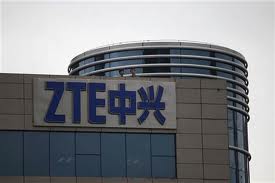  ZTE, a publicly-listed global provider of telecommunications equipment and network solutions, reported a net loss of 1.945 billion yuan ($311.43 million) in the third quarter ended September 30 compared with a net profit of 299.27 million yuan in the same period last year.
Based on PRC ASBEs, the company’s operating revenue amounted to RMB 60.7 billion, an increase by approximately 5% compared to same period a year earlier. Net loss attributable to share holders of the parent company amounted to RMB 1.7 billion, representing a year-on-year reverse of 259.1%.
According to the company, during the reporting period, ZTE’s operating cash flow increased by over RMB 6 billion compared to the same period of last year. During the period, selling and administrative expenses decreased without impacting the company’s commitment to research and development.
In the future, the overall corporate development strategy of the company also will reflect an increased focus to achieve a balance between cash flow, profitability and operating scale. In the past several years, ZTE established its position as a mainstream equipment supplier by penetrating major telecommunications markets including Europe, dramatically eroding the advantages previously held by industry leaders, allowing the company to seize the lucrative opportunities offered by network upgrades to 4G and other nascent technologies.
In the terminals division, the company’s smart devices won widespread recognition in high-end markets globally, positioning its brand and technology to seize China’s 4G market in the future. In wireless networks, the position of the company’s FDD-LTE and TD-LTE businesses globally has improved compared to the 3G era. In the TDD segment, ZTE is building commercial and trial TD-LTE networks for 33 internationally leading operators in 19 countries, and the company won the largest share in the recent TD-LTE tender by China Mobile. In fixed-broadband, the company is keeping its globally-leading position, with bearer network products maintaining good levels of profit margins.
In the third quarter, the balanced strategy is reaping initial benefits, with lower selling and administrative costs leading to large-scale improvement in operating cash flow. In the first nine months, ZTE posted a RMB 6 billion gain in operating cash flow compared to a year earlier, as customer-mix and receivables conditions improved. At the same time, ZTE posted a RMB 7 billion improvement in free cash flow from the same period a year earlier, as controls on capital spending strengthened. In terms of growth in free cash flow and operating cash flow, the performance in the third-quarter was the best in the past three years. ZTE is confident its cash flow will continue to strengthen in the near term, with improved levels of profitability, while the scale of the business will expand organically, allowing to company to achieve a top-3 position globally.
Growth in new markets: smart terminals, enterprise networks and managed services
In terms of geographical regions and product divisions, the company’s overall competitiveness will continue to increase as it takes advantage of its differentiation strategy. Geographically, the company will continue to focus on the long-term development of its business in Europe. It also will sustain its investment in the terminal market in the United States, while maintaining its leadership role in emerging markets. In terms of products, the company will focus on the key areas of wireless broadband, wired broadband, bearer networks, managed services, terminals and enterprise networks. The company also will consolidate product lines that offer low investment returns and limited potential.
In terms of new markets, ZTE will primarily focus on the development of smart terminals, government and corporate clients, and managed services. ZTE will build on its position as a global top-5 smart terminal vendor in the first three quarters, when it posted a dramatic improvement in gross profit margin in the terminal division. The company will continue to strengthen the competitiveness of its products and achieve further gains in profitability. In enterprise networks, the company will seek stable and rapid growth by exploiting its advantages in product standardization. The company posted fast business growth in the $200 billion managed services market.
The company will further strengthen efforts to control operating costs and cash flow, optimize business processes, improve operational efficiency and control potential contract risks. ZTE will manage employee numbers and maintain its commitment to research and development, allowing the company to exploit the window of opportunity opened by the development of LTE and other nascent technologies.
Looking ahead, ZTE said it believes that after 30 years of rapid development, the global telecommunications industry will enter a more stable growth phase, with a trend towards increased product specialization, as operators focus more on network efficiency and user experience. In recent years, the rapid growth of Internet-related industries has increased demand for telecommunications network bandwidth, prompting operators to increase investment in network infrastructure. This is also conducive to the expansion of ZTE’s existing solutions such as broadband bearer, broadband access and wireless broadband networks. For smart terminals, ZTE will continue cooperating with key international and domestic operators to drive higher revenue and profit. The company has long been aware of the rapid and healthy growth in telecommunications-related ICT industries. The company has been an early investor in these vibrant “blue-sea” sectors, and provided tailored solutions for enterprise networking, cloud-computing, and the Internet-of-Things.
The company is confident that by fine-tuning the development strategy, it can better address current and future market challenges, and achieve steady and robust growth. |